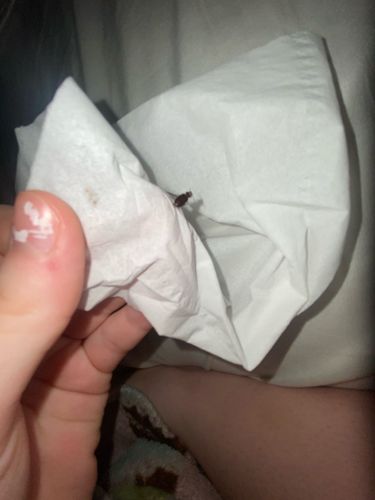Flea
Scientific Name: Siphonaptera (order), Pulex irritans (human flea), Ctenocephalides felis (cat flea), Ctenocephalides canis (dog flea), etc.
Order & Family: Order Siphonaptera, various families (e.g., Pulicidae)
Size: 1.5 to 3.3 mm (0.06 to 0.13 inches)

Natural Habitat
Fleas thrive in warm, humid environments. They are typically found on the bodies of their hosts (mammals and birds) and in the host's resting areas, such as bedding, carpets, upholstered furniture, and cracks in floors.
Diet & Feeding
Adult fleas are obligate hematophagous parasites, meaning they feed exclusively on the blood of their warm-blooded hosts. Larval fleas feed on organic debris, including adult flea feces ('flea dirt'), dander, and food particles.
Behavior Patterns
Fleas are wingless insects known for their exceptional jumping ability, used to move between hosts. They have a complete metamorphosis (egg, larva, pupa, adult). Adults can live for several months if they have access to a blood meal. They are typically active day and night, especially when hosts are resting.
Risks & Benefits
Risks: Fleas can cause intense itching, skin irritation, allergic reactions (flea allergy dermatitis), and secondary skin infections in hosts. They can also transmit diseases, such as Bubonic plague (historically significant, transmitted by Xenopsylla cheopis), murine typhus, and act as intermediate hosts for parasites like tapeworms (e.g., Dipylidium caninum). Benefits: In some ecosystems, they contribute to the natural regulation of host populations, but generally, their negative impacts on health outweigh any ecosystem benefits.
Identified on: 9/22/2025